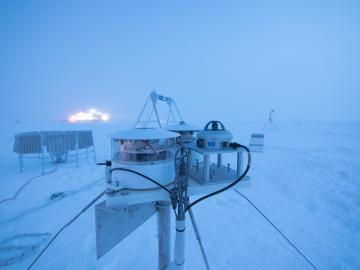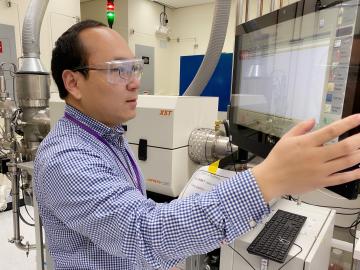
Filter News
Area of Research
- (-) Biology and Environment (36)
- (-) Fusion Energy (6)
- (-) Materials (16)
- (-) National Security (12)
- Advanced Manufacturing (10)
- Computational Engineering (1)
- Energy Science (69)
- Fusion and Fission (18)
- Isotopes (14)
- Materials for Computing (6)
- Mathematics (1)
- Neutron Science (9)
- Nuclear Science and Technology (21)
- Nuclear Systems Modeling, Simulation and Validation (2)
- Supercomputing (19)
News Topics
- (-) 3-D Printing/Advanced Manufacturing (8)
- (-) Advanced Reactors (4)
- (-) Cybersecurity (7)
- (-) Environment (34)
- (-) Fusion (6)
- (-) Isotopes (2)
- (-) National Security (6)
- (-) Nuclear Energy (8)
- (-) Space Exploration (1)
- Artificial Intelligence (6)
- Big Data (5)
- Bioenergy (14)
- Biology (22)
- Biomedical (11)
- Biotechnology (5)
- Chemical Sciences (4)
- Clean Water (6)
- Composites (1)
- Computer Science (24)
- Coronavirus (8)
- Critical Materials (3)
- Energy Storage (11)
- Exascale Computing (2)
- Frontier (2)
- Grid (1)
- High-Performance Computing (6)
- ITER (1)
- Machine Learning (3)
- Materials (11)
- Materials Science (36)
- Mathematics (1)
- Mercury (4)
- Microscopy (10)
- Molten Salt (1)
- Nanotechnology (19)
- Neutron Science (15)
- Physics (8)
- Polymers (5)
- Quantum Computing (1)
- Quantum Science (7)
- Security (5)
- Summit (9)
- Transportation (3)
Media Contacts

From soda bottles to car bumpers to piping, electronics, and packaging, plastics have become a ubiquitous part of our lives.

Six ORNL scientists have been elected as fellows to the American Association for the Advancement of Science, or AAAS.

The annual Director's Awards recognized four individuals and teams including awards for leadership in quantum simulation development and application on high-performance computing platforms, and revolutionary advancements in the area of microbial

Seven ORNL scientists have been named among the 2020 Highly Cited Researchers list, according to Clarivate, a data analytics firm that specializes in scientific and academic research.

Researchers at Oak Ridge National Laboratory were part of an international team that collected a treasure trove of data measuring precipitation, air particles, cloud patterns and the exchange of energy between the atmosphere and the sea ice.

New capabilities and equipment recently installed at the Department of Energy’s Oak Ridge National Laboratory are bringing a creek right into the lab to advance understanding of mercury pollution and accelerate solutions.

Popular wisdom holds tall, fast-growing trees are best for biomass, but new research by two U.S. Department of Energy national laboratories reveals that is only part of the equation.

About 60 years ago, scientists discovered that a certain rare earth metal-hydrogen mixture, yttrium, could be the ideal moderator to go inside small, gas-cooled nuclear reactors.

A developing method to gauge the occurrence of a nuclear reactor anomaly has the potential to save millions of dollars.

Systems biologist Paul Abraham uses his fascination with proteins, the molecular machines of nature, to explore new ways to engineer more productive ecosystems and hardier bioenergy crops.


